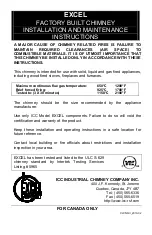
The IP Address field on the
General
tab for the
Units
screen displays the IP of the TSP that is
currently being communicated with and is used to connect to other TSP’s already assigned an IP
address and connected to the network. If the serial connection is used for control of the TSP, the
Ethernet connection is still required if using audio files or to download software updates.
To set-up, ensure you have connected the TSP ethernet port to the LAN with a straight through
cable. For connecting directly to the PC with the crossover cable provided, use a valid IP format
that is in the same subnet and uses a valid subnet mask. If connecting to a LAN, see the network
administrator to assign a static IP for the TSP. Go to the
Units
menu, click on the unit name and
select the
Network
tab on the
Units
screen to input the IP address. Click
OK
on the
Units
screen.
Network Control
The
Network
connection can be used for controlling the TSP. This is done by going to the
Units
menu, and clicking on the name of the unit at the bottom of the drop-down window. On the
Units
screen, the IP address programmed into the Unit will be displayed. Click the radio button for the
Network
connection and click
OK
. The TSP will be controlled via the Ethernet connection to the
TSP at this point.
If the IP address is not displayed, follow the instructions in the previous Network Connection
section to program the TSP with one.
Network control can only be done by PCs on the same subnet as the TSP.
Connecting to an Existing TSP
You can connect to any other TSP that has been assigned a valid IP address and is on the
network. This is done by creating a new Unit, choosing the
Network
radio button, inputting the
existing IP address of the unit you wish to connect in the
IP Address
field on the
General
tab,
clicking on
Query Card Types
and clicking
OK
. The
Query Card Types
action is done to match
the card types in the TSP to your project. Otherwise an error message will occur advising card
types do not match.
If you want to connect to a TSP that you previously have connected to, the program will
remember the name and the IP address of all the TSP’s that PC has connected to. To do this, go
to
Units
and select
New
. On the new
Unit
window, click on the arrow at the right of the entry field.
Select the name of the unit you wish to connect. This will populate the last known IP address for
that unit name. The
Query Card Types
command will still need to be done.
Override
If a TSP is accessed when it is in use, an Override message will appear. The machine name of
the party using it will be given and the option to override the connection. If the override is
implemented, the machine that was previously connected to the TSP will receive a
Communication Error message advising of the Network Connection Override and the machine
name of the party that took control. All Override actions are recorded on the
Event Log
found on
the
View
menu (see Event Log section of TSP manual for more details).
This feature is necessary to regain control of the TSP in the case of a broken connection to the
network by the PC controlling it. This also makes it convenient to control the TSP from different
locations.
To take control back when a connection is overridden, go to the
Units
menu, choose
Initialize
and
the name of the Unit.
Changing an IP Address
To change an IP Address of a TSP already programmed with one, go to the
Units
menu and
choose the name given the TSP. This will bring up the
Units
screen. Choose the
Network
tab,
input the new IP address and click
OK
. The TSP will now have the new IP address and the PC
program will be communicating using the new IP address.
Telecom Simulation Platform
Page 20
















































